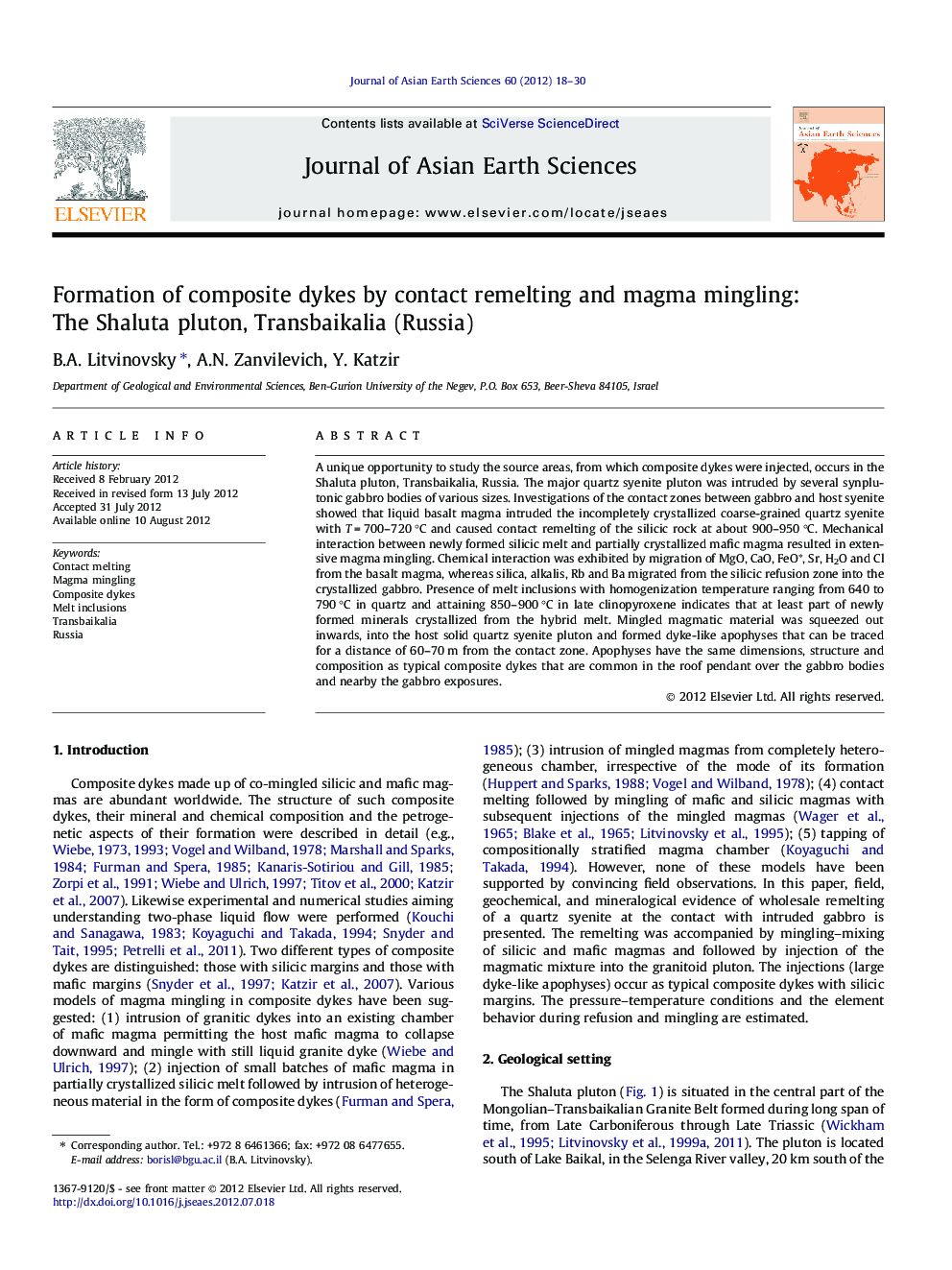| کد مقاله | کد نشریه | سال انتشار | مقاله انگلیسی | نسخه تمام متن |
|---|---|---|---|---|
| 4731078 | 1640405 | 2012 | 13 صفحه PDF | دانلود رایگان |

A unique opportunity to study the source areas, from which composite dykes were injected, occurs in the Shaluta pluton, Transbaikalia, Russia. The major quartz syenite pluton was intruded by several synplutonic gabbro bodies of various sizes. Investigations of the contact zones between gabbro and host syenite showed that liquid basalt magma intruded the incompletely crystallized coarse-grained quartz syenite with T = 700–720 °C and caused contact remelting of the silicic rock at about 900–950 °C. Mechanical interaction between newly formed silicic melt and partially crystallized mafic magma resulted in extensive magma mingling. Chemical interaction was exhibited by migration of MgO, CaO, FeO∗, Sr, H2O and Cl from the basalt magma, whereas silica, alkalis, Rb and Ba migrated from the silicic refusion zone into the crystallized gabbro. Presence of melt inclusions with homogenization temperature ranging from 640 to 790 °C in quartz and attaining 850–900 °C in late clinopyroxene indicates that at least part of newly formed minerals crystallized from the hybrid melt. Mingled magmatic material was squeezed out inwards, into the host solid quartz syenite pluton and formed dyke-like apophyses that can be traced for a distance of 60–70 m from the contact zone. Apophyses have the same dimensions, structure and composition as typical composite dykes that are common in the roof pendant over the gabbro bodies and nearby the gabbro exposures.
► The contact zone between a gabbro intrusion and a resident quartz syenite pluton was studied.
► Incompletely crystallized granitoid was remelted within a contact zone of 0.2–3 m wide.
► Remelting was accompanied with extensive magma mingling–mixing.
► Remelting and mingling occurred at 900–950 °C and 2–3 kbar.
► The mingled magmatic material was squeezed out along the fissures inward the solid quartz syenite, forming typical composite dykes.
Journal: Journal of Asian Earth Sciences - Volume 60, 22 October 2012, Pages 18–30